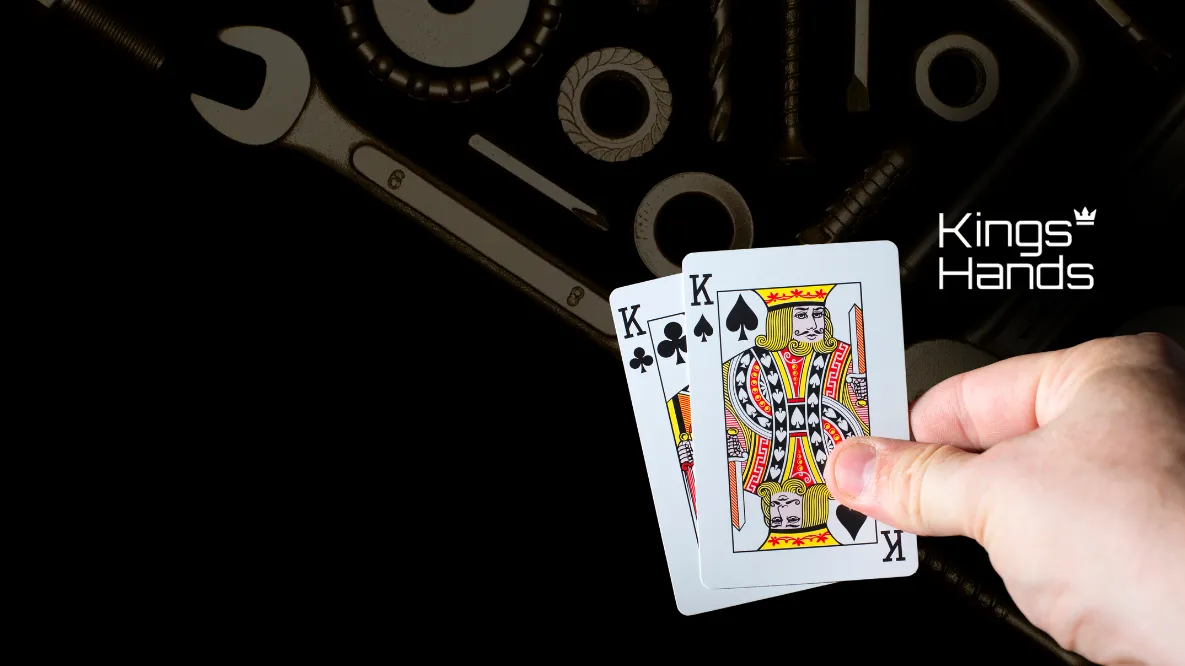Pot Limit Omaha and similar games are extremely popular amongst recreational and professional players, as the increased number of cards creates more chances to make a strong hand and play a big pot. However, if you’re playing any of these games in a casino, you’ll quickly realise that the pot limit format makes it hard to calculate how much you can bet/raise on any given street.
While you are free to ask the dealer for the maximum raise amount, doing so may give off a tell that can be picked up by your opponent. For this reason, it’s preferable that you understand how to calculate the pot yourself. If you don’t know how to calculate the pot in pot limit games, don’t panic; we’re here to guide you through the process of calculating both preflop and postflop raises.
By the end of it, you’ll be a veritable pot limit math whiz!
What are Pot Limit Games?
Pot limit poker games are a variety of poker game where a player can only bet or raise the size of the pot. Limiting bets and raises to the size of the pot makes it harder for players to get all-in, particularly on early streets. This is considered to be a benefit when playing games such as Pot Limit; equities run so close in this game that if players were allowed to easily get it in preflop, there would be very little postflop play, making the game rather dull.
So, to combat this, Omaha is traditionally played as a pot limit game. Unfortunately, pot limit games are harder to manage than No Limit games, as you constantly need to be aware of the size of the pot when making a bet or raise. In online games, the computer can work this out for you, but when you play live, you either need to work it out yourself or ask the dealer for help.
How To Calculate Preflop Raises In Pot Limit Poker Games
Calculating raises in pot limit games often confuses players who are new to the game. This is because when calculating the size of the pot to make a raise, you can’t simply add up all the chips that you see in front of you, you need to add your call to the total amount. That might sound confusing, but let’s take a look at a couple of examples to make things easier.
It’s a $1/$2 PLO game and you want to make a preflop raise but want to know the maximum you’re allowed to raise. You look at the pot and you see there’s $3 in the middle, so you assume that you can only raise $3. Wrong! You need to add your call before calculating the size of the pot. It’s like the classic “I’ll see your bet, then I’ll raise you!” line, you make the call before putting in the raise.
So, in this example, you add your $2 call to the total pot and see that it now totals $5. This means you can raise $5 more than the previous bet; the previous bet was $2, so the total amount you put in the middle is $7.
When calculating a raise-first-in in PLO, an easy way to remember it is 3.5 times the size of the big blind. So, in a $1/$2 game, the most you can raise is $7, in a $5/$10 game, the most you can raise is $35, and so on.
But, what if someone makes a raise before you? What happens to our calculations then? Well, they remain the same! Let’s take a look at an example to demonstrate.
Your opponent raises $7 from UTG, and you want to know how much you can raise. To calculate the size of the pot, you add up the $7 raise, the $2 big blind, and the $1 small blind, which totals $10. Then you add your $7 call, which makes the total $17. So, you can raise $17 on top of your $7 call (remember, “I call, then I raise”), which means the total amount you put in the middle is $24.
How To Calculate Postflop Bets In Pot Limit Poker Games
Postflop bets are the easiest thing to calculate when playing a pot limit poker game; there’s no need to do any complicated math with this one. When you are preparing to make a bet, all you need to do is calculate what’s in the pot already, and that’s the maximum amount you can bet.
If there was a lot of action preflop and you can’t remember who bet what, you can ask the dealer to spread the pot, allowing you to easily count what’s in the middle. Once you’ve worked out how much is in the pot, then you’re free to bet anything between 1bb and the size of the pot.
How To Calculate Postflop Raises In Pot Limit Poker Games
However, if someone has already made a bet in front of you on a postflop street, things start to get complicated again. This is where we need to crack out the math from our preflop raises; once you get the hang of doing this, you’ll find it extremely easy.
So, you’re on the flop, there’s $20 in the middle, and your opponent has just bet $10. How much can you raise? Well, let’s take a look at the math and find out.
With your opponent’s bet, there is $30 in the pot. If you remember our preflop math, you need to add your call to the size of the pot before calculating your raise. So, $30 plus $10 equals $40 – that’s the total amount you can raise on top of your opponent’s bet, which means that the total amount you put into the pot is $50.
An easy way to calculate this on the fly is to multiply the last amount that was put in the pot by three, then add the size of the pot before the bet was made. In the previous example, that would be $10 x 3 = $30, plus the $20 that was already in the pot, which makes $50. Calculating the size of the pot this way makes it easier when there are multiple players in the pot.
For example, you’re on the flop, and there’s $50 in the pot. The player first to act bets $25, and the player next to them calls. What’s the total amount you can raise? Well, first we take the last amount that was put in the pot, which was $25 and multiply it by three to get $75. We then add the size of the pot before that ($50 + $25) to get $75. We then add the two together to get $150, which is the maximum you can put into the middle when raising.
The more you practice these calculations, the easier they’ll get.
Summary
While it can be a little intimidating at first, calculating bets and raises in pot limit games isn’t complicated. To make things easier, there are a couple of shortcuts you can use at the tables. If you want to know how much you can raise preflop, simply take the size of the big blind and multiply it by 3.5. If someone has already made a preflop raise or has made a postflop bet, simply take the last amount put in the middle, multiply it by three, and add the size of the pot before that amount was put in.
Easy, right? With a bit of practice, you’ll be armed and ready to take on your local PLO game, so get out there and start crushing!





















